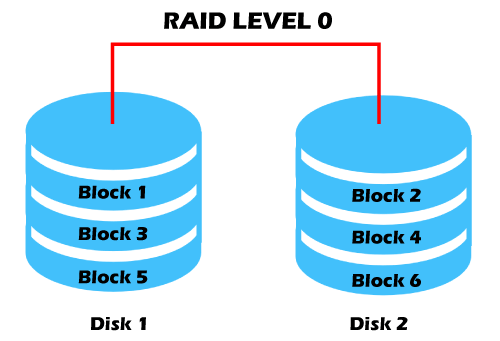Raid 0RAID 0 is an abbreviation of the Redundant Array of Independent Disk level 0. Raid 0 is also called striped volume or stripe set or disk striping. Raid 0 is a standard level, which does not consist of mirroring or parity, but only consists of striping for handling the data. This level needs at least two disks for processing. In the system of Raid 0, data is split into small blocks (strips), and then the data is written to two or more drives parallelly in the array. This level increases the speed and improves the Input/Output performance by using the multiple disks simultaneously. The read and write operation on the data in RAID 0 is faster. 
It does not offer redundancy and fault tolerance in the data. The main disadvantage of this level is that, if any of the drives fail due to some reason, then all the data on that drive is lost. And, the lost data cannot be backed up or accessed. This disk level is the right choice in those situations when a large volume of high-speed storage is required. Why Use RAID 0Following are some reasons which describe why should we use RAID 0:
Advantages of RAID 0Following are the advantages or benefits of a Redundant Array of Independent Disk level 0:
Disadvantages of RAID 0Following are the disadvantages or cons of Redundant Array of Independent Disk level 0:
Difference between RAID 0 and RAID 1Following table shows the comparisons between the RAID level 0 and RAID level 1:
Next TopicRAID 1
|
 For Videos Join Our Youtube Channel: Join Now
For Videos Join Our Youtube Channel: Join Now
Feedback
- Send your Feedback to [email protected]
Help Others, Please Share










